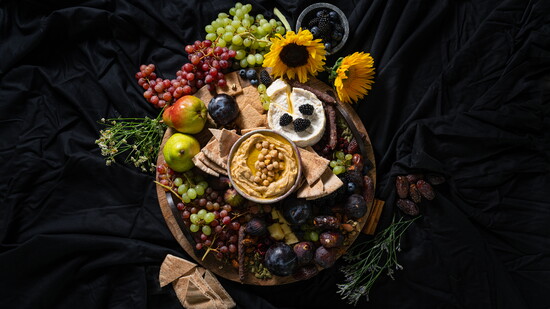I am often asked: “Doctor, what’s the best diet?”
The honest answer? It depends on your age, gut health, gender, physical activity, metabolism, and the unique medical conditions that shape your body.
While fad diets can yield short-term results, research consistently shows they are rarely sustainable over time.
One of my patients put it perfectly: “You know why I hate diets? Because the word DIE is in it.” And she’s right. Dieting can strip away the joy from one of life’s simplest, most human pleasures: sharing and savoring good food.
Our bodies were designed to eat in rhythm, not in haste. As food makes its way down, a cascade of enzymes is released from the stomach and small intestine. Your nervous system shifts from “fight or flight” to “rest and digest.” Blood flow is rerouted to your gut, enabling your body to perform the extraordinary work of nutrient absorption. This magnificent process is bypassed when nutrients arrive in pill or powder form or from juice stripped of fiber. Without the whole food matrix, juices can spike blood sugar, disrupt hormones, and unsettle your stress response.
Globally, nearly every major medical society agrees that plant-forward eating, rich in whole foods and low in processed products and animal fats, can prevent and sometimes even reverse disease. This philosophy is also echoed in the Blue Zones Project, a global longevity study identifying five regions: Okinawa (Japan), Sardinia (Italy), Nicoya (Costa Rica), Ikaria (Greece), and Loma Linda (California), where people live measurably longer, healthier lives. Research into these communities reveals common traits among centenarians: a predominantly plant-based diet, stopping eating when they are about 80% full, strong social connections, daily physical activity woven into their routines, and a deep sense of purpose. Their way of life offers compelling evidence that healthy eating is just one piece of a larger, interconnected lifestyle that fosters health and longevity.
In my primary care and lifestyle medicine practice, “food as medicine” is often my first prescription, or a powerful companion to conventional treatments, for conditions like diabetes, high cholesterol, and hypertension. Whole foods, especially plants, provide vitamins, minerals, fiber, and phytonutrients in a form your body can truly absorb. That fiber also nourishes your gut microbiome, which in turn produces short-chain fatty acids which signals the release of your body’s own natural version of GLP-1.
There are several healing properties of whole fruits and vegetables. Consider the antioxidant-rich polyphenols in pomegranates; tiny molecules that help neutralize free radicals, slowing cellular aging and supporting heart health. Or the satisfying richness of a roasted sweet potato, brimming with beta carotene. You don’t have to be vegan or vegetarian to reap these benefits. Aim for whole plant foods and whole grains to cover at least 50–75% of your plate, and you may notice positive changes in as little as 24 hours.
And yes, vegetables can be fabulous. In my family, I’m known for creating luxuriously abundant, plant-forward grazing boards during the holidays. They’re vibrant, inviting, and most importantly, delicious. I begin with a central food item, such as homemade hummus, and build around it with seasonal produce, dried fruit, nuts, olives, cheese, whole-grain crackers and pita bread. At a recent potluck, a colleague even requested her own personal tub of that dreamy homemade hummus… so good, and I’ve shared the recipe with you below.
This season, I invite you to consider your meals not as “diets,” but as “nourishment” for your body and soul. Food isn’t just fuel. It’s your daily love letter to yourself. Write it well.
The Dreamiest Hummus
Serves 4-6 | Prep time: 20 minutes
Ingredients:
3 cans organic chickpeas, liquid drained and rinsed
1 cup tahini
3 cloves of garlic, crushed
1 lemon, juiced (3-4 tablespoons)
Kosher salt
½ to ¾ cup ice cold water
Method:
- In a food processor, blitz the chickpeas into a paste—it will be thick like a nut butter.
- With the processor still running, carefully add the tahini, garlic, lemon juice and 1 tsp of salt
- In a thin stream, add about a ½ cup ice water until the hummus is luxuriously whipped and smooth.
- Add salt to taste. Add more water as needed for desired consistency.
- Scoop it into a bowl and smooth it out with the back of a spoon creating a well in the middle.
- Drizzle with your favorite high quality extra virgin olive oil. You can also fill the center with other deliciousness; toasted pine nuts, braised wild mushrooms, roasted red peppers drizzled with Calabrian chili oil, warm thinly sliced lamb shawarma… the possibilities are endless!
Place at the heart of a luxuriously curated grazing board. Devour with warm pita bread or toasted pita chips.
Dr. Mila Lopez, MD, is a Primary Care Physician at Luxury Lifestyle Medicine™
luxurylifestylemedicine.com
"Dieting can strip away the joy from one of life’s simplest, most human pleasures: sharing and savoring good food. Consider your meals not as 'diets,' but as 'nourishment' for your body and soul. Our bodies were designed to eat in rhythm, not in haste."
